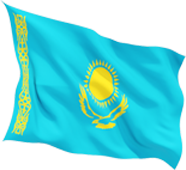In Uzbekistan, the level of inflation has been high for many years and in recent years, in the context of the implementation of structural reforms in the economy, the liberalization of regulated prices and the increase in the income of the population, the inflationary processes have accelerated. This brought the issue of curbing the inflation to the agenda in order to ensure stable macroeconomic development.
The issue of reducing inflation and ensuring price stability in the economy is important for achieving overall macroeconomic stability and economic recovery.
To achieve low inflation, the government policy required to take into consideration structural reforms and effective fiscal policy at the same time. By conducting precise macroeconomic policy, the inflation targeting regime can be one of the main policies that stimulates long-term inclusive economic growth and ensures minimum damage during the crisis periods.
As a component of the disciplined macroeconomic policy, it is demanded to further improve the monetary policy of the Central Bank, to review its directions and principles from the point of view of ensuring price stability.
First of all, taking into account that the main goal of the Central Bank’s activity is to ensure price stability in the economy, the task of gradually transiting the monetary policy to the inflation targeting regime based on the international experience was assigned in the President’s decree.
Alignment of monetary policy mechanisms with the inflation targeting regime means ensuring price stability in the medium term, lowering the inflation rate to the target level and ensuring price stability by conducting an effective monetary policy.
The activity of the Central Bank has been fundamentally revised in this direction. Measures have been taken to improve the operational mechanism of the monetary policy, analytical and forecasting capacity, communication policy and decision-making processes.
In order to increase the flexibility of monetary instruments, the policy rate and interest rate corridor were introduced and actively used. The Central bank’s monetary policy instruments focused on creating conditions for the formation of interest rates in the money market close to the policy rate by effective regulating liquidity in the banking system.
In particular, the Forecasting and Policy Analysis System (FPAS) and Quarterly Forecasting Models (QPM) has been widely used in the preparation of macroeconomic analysis and forecasts for reviewing the interest rate. It began to ensure that the decisions made were based on comprehensive macroeconomic statistics, analysis and expectations.
Communication channels of monetary policy have been developed in order to convey the reasons and explanations for decisions in the monetary policy to the general public. In this regard, a system has been established to increase transparency in this area, to establish permanent two-way communication with residents and business entities, and to explain every step in an easy language.
In the effective implementation of the inflation targeting regime, the tasks of improving the FX interventions of the Central Bank in the field of foreign exchange policy, developing the institute of market makers, introducing market principles in foreign exchange transactions conducted at the Republican Currency Exchange, and increasing the role of commercial banks in the formation of the exchange rate were defined.
Based on these tasks, by the decision of the Board of the Central Bank, starting from February 15, 2021, trades in the domestic currency market have been improved and carried out in the continuous auction method as in all countries that have introduced the inflation targeting regime.
In the continuous auction method, currency trading in the domestic FX market continues for a longer period of time, transactions are carried out at different rates based on the orders of buyers and sellers whose prices match each other and the importance of market participants in determining the rate increases.
In particular, the Central Bank also participates in the market as a market participant, following the principle of neutrality. This method makes it possible to more widely introduce market principles in the formation of the exchange rate, to ensure its formation on the basis of supply and demand, and to increase its flexibility to macroeconomic conditions.
Furthermore, the daily determination of the official exchange rate of the Central Bank has established. In turn, commercial banks have been given the opportunity to trade freely in the domestic currency market.
The practice of commercial banks participating in interbank FX trading on behalf of clients has been abandoned and they are given the opportunity to freely buy and sell foreign currency within their open FX positions. This practice encourages the participation of banks in determining the exchange rate and contributes to the formation of a balanced exchange rate.
In addition, calculations on trading practices in the domestic FX market are coordinated in line with the international standards and based on this, the “Strategy of currency interventions of the Central Bank of the Republic of Uzbekistan for 2021-2025” has been approved.
Definitely, external macroeconomic risks under the effect of geopolitical conflicts had an impact on the economic indicators of our country in some degree. Inflation accelerated from 10 percent annually at the end of 2021 to 12.3 percent in 2022. Due to the increase of inflationary pressures, the Central Bank changed the deadline of achieving the 5 percent inflation target to the second half of 2025, while maintaining “relatively strict” monetary conditions.
Certainly, the goals of achieving long-term sustainable high economic growth, inclusiveness of economic growth and macroeconomic stability require reducing the level of inflation and ensuring price stability in the country.
Based on this, the main task of the monetary policy of the Central Bank in the next years is to reduce the level of inflation to the target indicator of 5 percent and maintain it at low level. A number of measures have been defined in this direction and all efforts will be directed to the effective implementation of these measures.
Fayoz Gafurov,
Jamshid Mamasalaev
Central Bank of Uzbekistan











